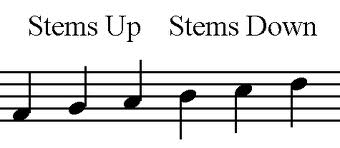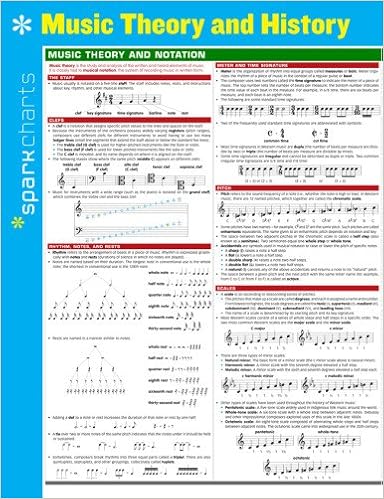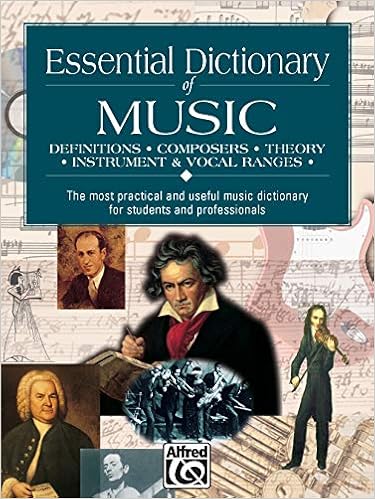The stem rule tells us which direction the stem of a music note must be written on the music staff.
You may have noticed that sometimes you see stems going up for some notes and going down for others.
This is not just random. There are two compositional rules musicians follow when writing notes on the staff.

Rule #1
If the notehead of a music note is on the third line of the staff or above, the stems must go down on the left. (If you’re not sure what the third line is, read more here about the lines and spaces.)
Write the stem attached to the left side of the note and point it down below the notehead.
Rule #2
If the notehead is below the third line, the stem goes up on the right. In other words, attach the stem to the right side of the note and have it travel upward above the notehead.
Questions
Q. Does it matter what the clef sign is?
A. Nope. The same rule applies to all clef signs. This includes treble clef, bass clef and the C-clef’s.
Q. Does the direction of the stem effect the note value?
A. No. It doesn’t matter what direction the stem is going. You will still treat the note the same.
Q. Is this rule universal?
A. Yes. This same procedure of writing music is followed all over the world.
That’s it! Those are your two basic rules for why you sometimes see the stem of a note pointing up, and other times down.
Just remember that notes on the third line and above have stems down on the left and anything below that is up on the right.
Really, the stem rule is pretty easy to memorize. In fact, why don’t you try doing that right now?
Draw yourself a quick five line staff on a scrap piece of paper and try your hand it. Practicing this a few times is a great way to remember it.
Helpful Music Theory Guides
This foldable 8x10 inch music theory cheat sheet is an excellent quick reference guide when you need to find the answer fast. The side 3-hole punch allows you to keep it in a 3-ring binder. It is sturdy and folds out featuring music theory and notation on the front and music history on the back.
A practical pocket-size music theory dictionary and music notation reference guide that is perfect for all musicians from beginner to professional.
A convenient music theory book that is small enough to fit in your pocket, backpack, or instrument case. A great reference guide for all musicians at any level of music study.




Okay so I’m in choir at my school. I’m a senior and was never taught stem direction or anything. I believe the jet is a C. It’s below the staff and it has a line through it… Which way would the stem go?
For any notes that hang below the music staff (like middle C), the stems go up on the right. For notes that are on the 3rd line of the staff or above, the stems go down on the left.
Teresa, i believe the third from the bottom paragraph is incorrect, Please check this as it contradicts what you have said at the top of the page about stems on noteheads.
Thank you for catching that mistake Fran! I just did a quick edit.
I’m unsure about the direction of stems when it comes to grouped notes. I’m looking at a book now with the notes in treble clef. I’m looking at a group of three quavers: F (in the bottom space of the treble clef) up to A and then up to B. These notes are all pointing up – yet B’s on their own point down. A bar later, I have A, D, C, A and this group of notes are all pointing down….I’m trying to see a rule or a pattern but I can’t. I’d be grateful for an explanation. It’s even more complex when the music has two or more voices.
Hi Tony- For every music writing rule, there are exceptions. When notes are beamed together (like eighth notes or quavers), the direction of the stems depends on where the majority of the notes are placed on the staff. If there are 3 out 4 notes with noteheads placed below the 3rd line, then all of the stems will point up on the right. Any notes with stems not beamed to other notes (like a quarter note or crotchet) will follow the rules listed above.
I am writing some music and in my music I have sixteenth and thirty-second notes in my music. How do these rules apply and how do I write them since there is the double and triple beam that connects sixteenth and thirty-second notes? If you or any body knows or could point me in the right direction that would be great. Thanks.
The same rules apply to any note value. If the majority of the notes within the sixteenth or thirty-second beamed grouping are on the third line of the staff or higher, then ALL of the stems within that grouping go down on the left. If the majority of the notes fall below the third line, then ALL of the stems within that same group of beamed notes go up on the right.
Thank-you for the info. It was very useful :))
Please does the length of the stem matters either up or down,if yes how do we know or draw the length of the stem. Thanks.
In many music writing books it states the stem length should reach the name of the note found on a line or space above or below the current written notehead. In other words, if you draw the note “E” on the second line of the staff, the step should go up on the right to reach the “E” that would be written in the fourth space. I wouldn’t get too caught up in this. Musicians don’t have time to worry about trivial things like this. They just need to quickly get the music down on paper before the train of thought is forgotten. Music writing software will automatically do this for you if it is a big concern.
I’m a guitar student, and i’m confused on what direction the stem would go for the treble clef b, and the bass clef c. Can you help me please?
Is there a rule for a beamed group of quavers where there is an even split.
For example a,c,a,c above middle c.
Artytwist
The stem rule as described above applies to notes in ANY clef.
The same rules apply for notes with or without a beam.
Hi Teresa,
Perhaps I need to rephrase my question.
If you have a group of notes: b, a, b, a above middle c on the treble clef. According to convention, the ‘b’ would have the stem going down, yet the ‘a’ would have the stem going up.
If these four notes were connected, which direction should the stems go?
Thanks
Arty
The stems go in the direction of the majority of notes beamed together. In this case 50% are stems up (“A” in the second space of the treble clef staff) and 50% are stems going down (“B” on the third line of the treble clef staff). The stems could technically go either direction in the example you have given, but will most likely appear with the stems up on the right most of the time in your music.
Thank you Teresa.
This was question asked me by a 9 year old student last night so is a little pedantic.
Thanks again for your quick response, I will be adding your website to my data base.
Arty
I thought I was told once that in SATB voicing, the stems differ dependent on the part (e.g. you know it’s the alto note you’re singing because it’s stem will go down unlike the soprano voice). Is this ever true?
In vocal music, yes the stem direction is dependent upon the vocal parts.
Hi…
I need lessons on arranging and harmonization…
Can you gradually help me with that please
If there are two eighth notes grouped together (not legato) and one is under the third line and one is on/above the third line, will the stems be facing up to the right or down to the left?
In Hymnal Book music on the bass clef stems seem not to follow the universal rules. Why is that? There are normally only two octave notes on the bass clef corresponding to the treble cleft note.
Oh, the stems on the bass clef staff seem to all point up no matter where the two notes fall on the staff
Stem direction can also be used to identify different voice parts. This would be true with hymnal music.
if i have to include slurs in a scale ..how will this affect the directions of the stem??
Slurs do not change the direction of a stem or effect it in any way.
I’m writing an instrumental arrangement for someone who is very concerned about “rules”. The program I use has standard notation, as well as corresponding fret numbers on strings, or Tablature as it’s called. My program gives me the option in notation of having stems go up or down. I understand your explanation. What I don’t understand is… what difference does it make? What benefit do the stems going up or down have in reading standard notation. All down looks fine to me and is easy to read, all beams across the top…consistent. If I’m going to have to go back and forth from up/down, I have to stop, go to settings, change it, stop go back…back and forth and back and forth. Understanding what difference it makes would make me less grumpy 🙂 I admit, not great at reading notation, but am a professional touring instrumental musician for 35 years. Thanks so much for your knowledge.
Most notation software will automatically use correct stem directions with music notes. The best answer I can give you for “What difference does it make?” is that it may be easier to read. I certainly did not create the stem rule and we will probably never know how this evolved. For those who read piano music or vocal music, the stem direction helps to separate out the parts or voices. So, it really depends on what type of music you are reading to truly answer your question. Don’t let rules stop you from creating. Go for it!
Hi I’m writing music where notes are played at the same time but on two different octaves, which side would I put the stem of the note on?
Thanks,
Are you writing for 2 different parts (instruments or voice)? Follow the stem rule if you are writing for piano. If you are writing for 2 different voices or instruments, the top voice uses stems up and the bottom voice uses stems down.
Why exactly do you need to change the position of the stems in the first place? Because the notes don’t change.
Oh and earlier when you were talking about length of the stems you said drawing an E on the 2nd line? I don’t understand isn’t that a G note?
I’m assuming you meant the first line?
Oh maybe you meant actually drawing an E letter as an example of how far to go right? You didn’t mean the actual note dot right cause that’s definitely a G on the 2nd line.
HI where would the stem go if lots of quarter notes were on the notes G,A,B,C,D,E and F. Where would the stem go for all of them?
This rule is just for single note. Where can I find the book showing rules for group of notes with beaming